
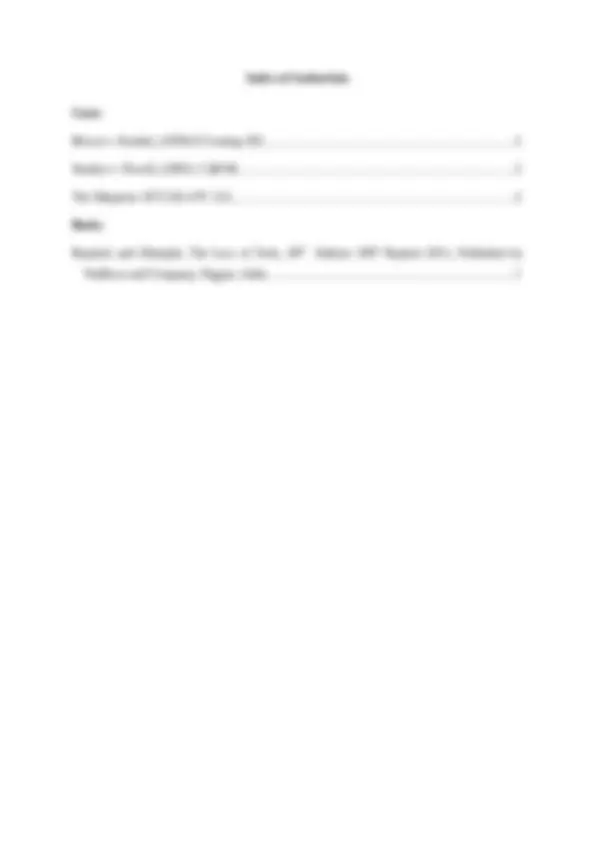
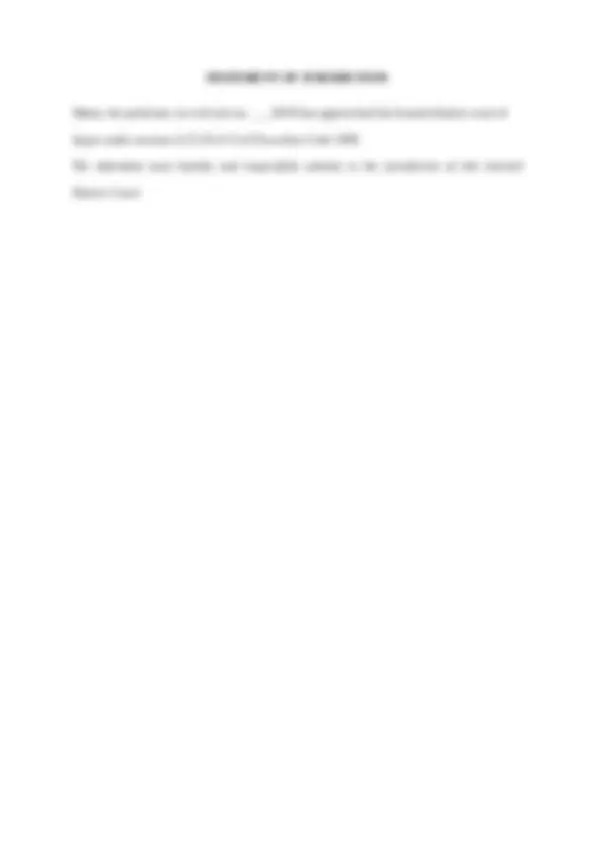
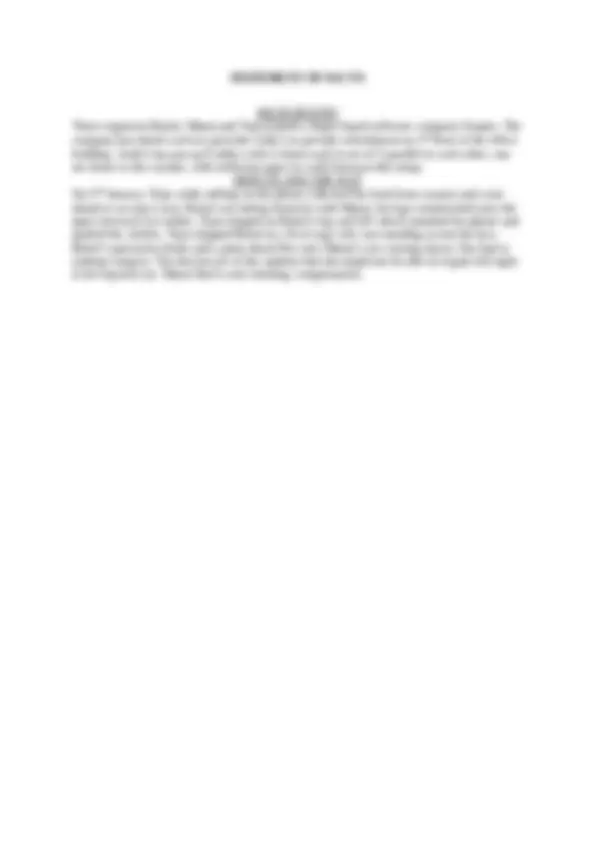
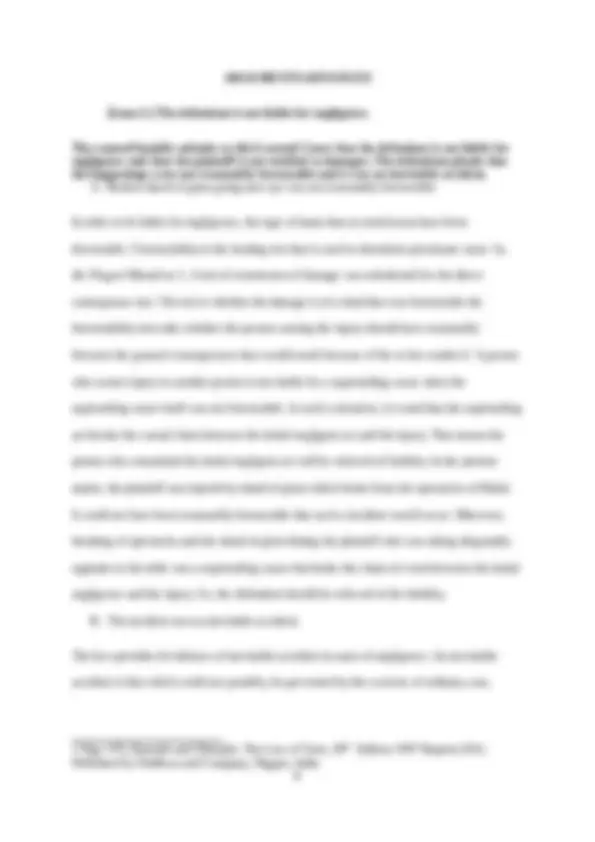
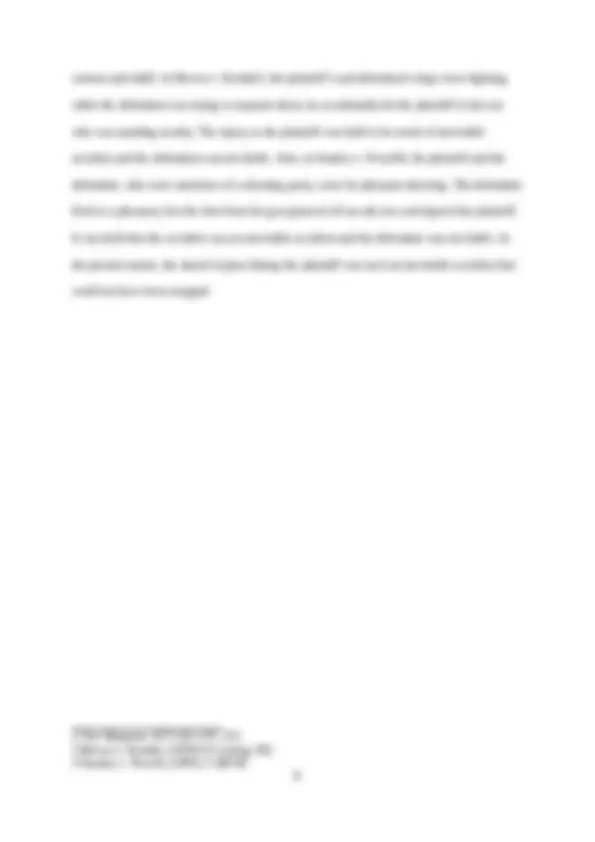
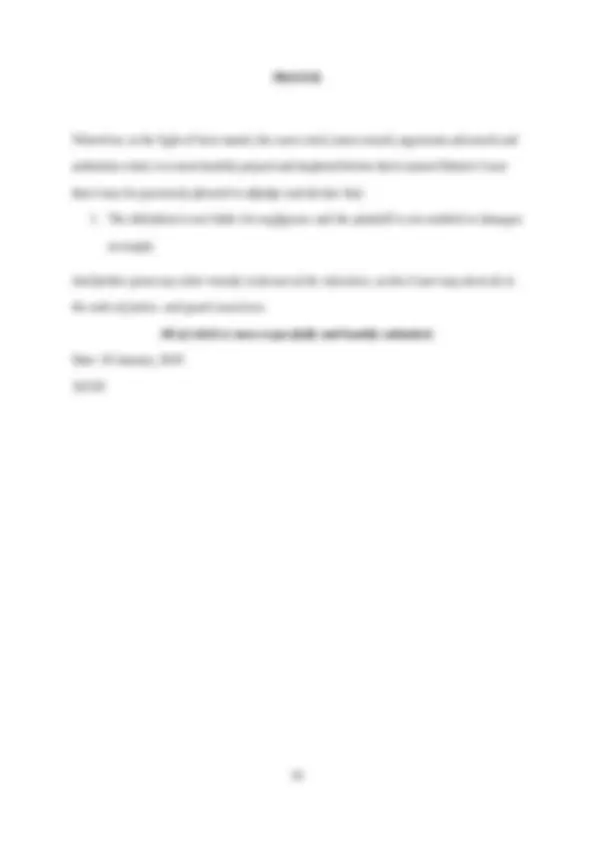


Study with the several resources on Docsity

Earn points by helping other students or get them with a premium plan


Prepare for your exams
Study with the several resources on Docsity

Earn points to download
Earn points by helping other students or get them with a premium plan
Community
Ask the community for help and clear up your study doubts
Discover the best universities in your country according to Docsity users
Free resources
Download our free guides on studying techniques, anxiety management strategies, and thesis advice from Docsity tutors
torts law court room exercise memorial
Typology: Study Guides, Projects, Research
1 / 10

This page cannot be seen from the preview
Don't miss anything!







v. TEJAS……...…………………………………………………………………. DEFENDANT CIVIL SUIT NO. ___/ [under SECTIONS 9,15,19 of cIVIL PROCEDURE CODE 1908]
TABLE OF CONTENTS........................................................................................................... ii Index of Authorities.................................................................................................................. iii STATEMENT OF JURISDICTION......................................................................................... iv STATEMENT OF FACTS..........................................................................................................v ISSUES FOR CONSIDERATION............................................................................................vi SUMMARY OF ARGUMENTS............................................................................................. vii ARGUMENTS ADVANCED.................................................................................................... 1 [Issue.1.] The defendant is not liable for negligence............................................................. 1 PRAYER.................................................................................................................................... 3
Mansi, the petitioner, in civil suit no. ___/2018 has approached the learned district court of Jaipur under sections 9,15,19 of Civil Procedure Code 1908. The defendant most humbly and respectfully submits to the jurisdiction of this learned District Court.
Three engineers Rahul, Mansi and Tejas joined a Jaipur based software company Sunpro. The^ BACKGROUND company has hired a service provider Joshi’s to provide refreshment on 3 rd^ floor of the office building. Joshi’s has put up 6 tables with 4 chairs each in set of 3 parallel to each other, oneset closer to the counter, with sufficient space to walk between this setup. DISPUTE AND THE SUIT On 2nd^ January, Tejas while talking on his phone collected his food from counter and went ahead to occupy a seat. Rahul was sitting leisurely with Mansi, his legs outstretched onto thespace between two tables. Tejas tripped on Rahul’s leg and fell which smashed his phone and spoiled the clothes. Tejas slapped Rahul in a fit of rage who was standing across his face. Rahul’s spectacles broke and a glass shard flew into Mansi’s eye causing injury. She had toundergo surgery. The doctors are of the opinion that she might not be able to regain full sight in her injured eye. Mansi filed a suit claiming compensation.
I. The defendant is not liable for negligence.
The defendant is not liable for the negligence as A] Broken shard of glass going into eyewas not reasonably foreseeable. B] The incident was an inevitable accident.
[Issue.1.] The defendant is not liable for negligence.
The counsel humbly submits to this Learned Court that the defendant is not liable fornegligence and thus the plaintiff is not entitled to damages. The defendant pleads that the happenings were not reasonably foreseeable and it was an inevitable accident. A. Broken shard of glass going into eye was not reasonably foreseeable
In order to be liable for negligence, the type of harm that occurred must have been foreseeable. Foreseeability is the leading test that is used to determine proximate cause. In, the Wagon Mound no 1, A test of remoteness of damage was substituted for the direct consequence test. The test is whether the damage is of a kind that was foreseeable the foreseeability test asks whether the person causing the injury should have reasonably foreseen the general consequences that would result because of his or her conduct1. A person who causes injury to another person is not liable for a superseding cause when the superseding cause itself was not foreseeable. In such a situation, it is said that the superseding act breaks the causal chain between the initial negligent act and the injury. That means the person who committed the initial negligent act will be relieved of liability. In the present matter, the plaintiff was injured by shard of glass which broke from the spectacles of Rahul. It could not have been reasonably foreseeable that such a incident would occur. Moreover, breaking of spectacles and the shard of glass hitting the plaintiff who was sitting diagonally opposite to the table was a superseding cause that broke the chain of event between the initial negligence and the injury. So, the defendant should be relieved of the liability. B. The incident was an inevitable accident.
The law provides for defence of inevitable accident in cases of negligence. An inevitable accident is that which could not possibly, be prevented by the exercise of ordinary care,
1 Page 476, Ratanlal and Dhirajlal, The Law of Torts, 26th^ Edition 1997 Reprint 2011; Published by Wadhwa and Company, Nagpur, India
Wherefore, in the light of facts stated, the cases cited, issues raised, arguments advanced and authorities cited, it is most humbly prayed and implored before this Learned District Court that it may be graciously pleased to adjudge and declare that:
And further grant any other remedy in favour of the defendant, as this Court may deem fit in the ends of justice, and good conscience. All of which is most respectfully and humbly submitted. Date- 16 January, 2019 1615D